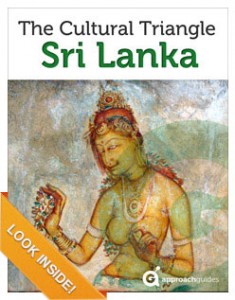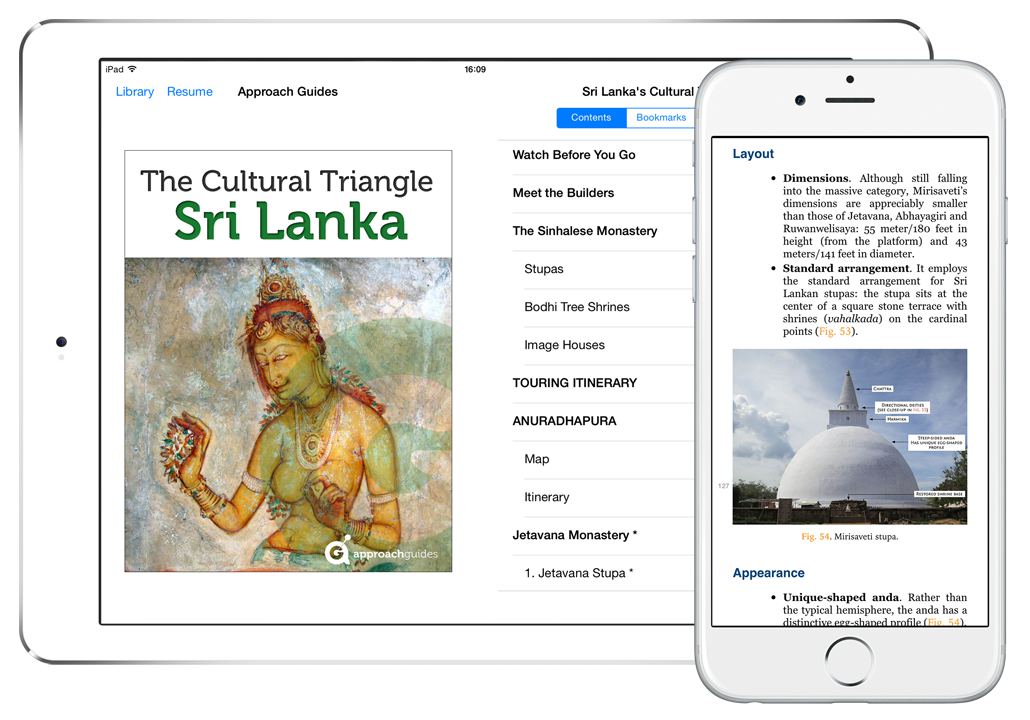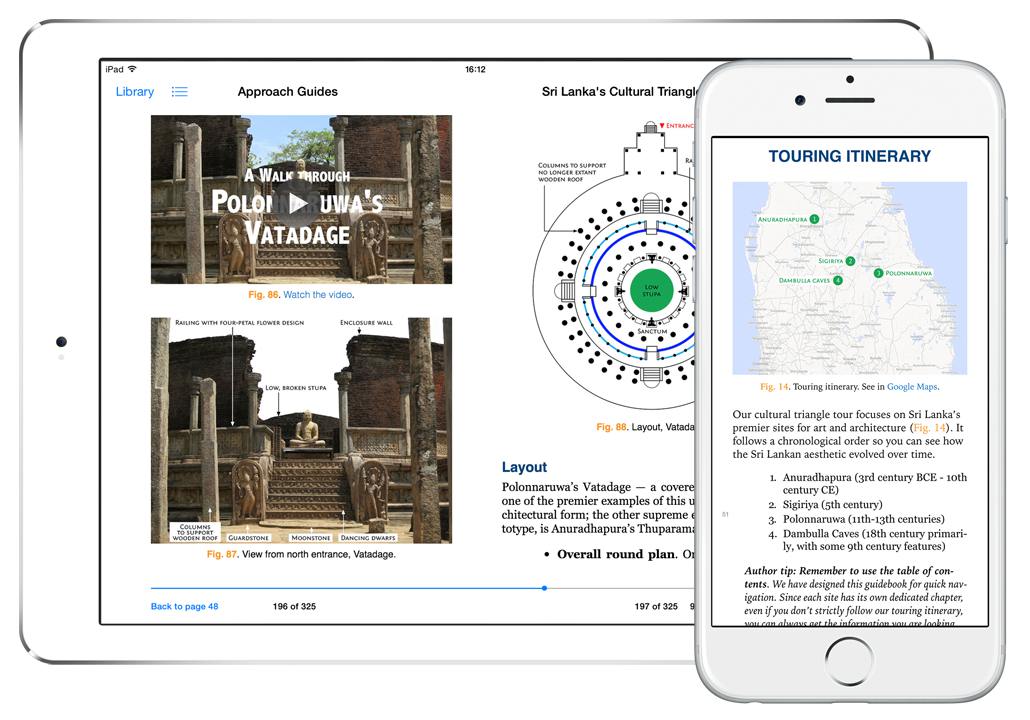Home to the world’s premier Buddhist art and architecture, Sri Lanka’s cultural triangle — Anuradhapura, Sigiriya, Polonnaruwa and Dambulla Caves — offers travelers an experience available nowhere else. On our tour itinerary, we explore the Sinhalese civilization’s brilliant 2000-year legacy that features the world’s largest brick-built structures, ancient bodhi tree shrines, painted cave temples and colossal standing Buddhas. Still infused with its historical magic, it is yours to discover.
What’s in this guidebook
- Art and architecture review. We provide an overview of Sri Lanka’s Buddhist art and architecture, isolating trademark features that you will see again and again while touring the island’s cultural triangle. To make things come alive, we have packed our review with high-resolution images.
- Tour of the highlights. Following our tradition of being the most valuable resource for culture-focused travelers, we offer a tour of Sri Lanka’s greatest monuments (itinerary below). For each, we reveal its most important architectural and decorative features and offer a discussion that ties it all together.
- Advice for getting the best cultural experience. To help you plan your visit, this guidebook supplies logistical advice, maps and links to online resources. Plus, we give our personal tips for getting the most from your experience while on location.
- Information the way you like it. As with all of our guides, this book is optimized for intuitive, quick navigation; information is organized into bullet points to make absorption easy; and images are marked up with text that explains important features.
Our cultural triangle tour focuses on Sri Lanka’s premier sites for art and architecture. It follows a chronological order so you can see how the Sri Lankan aesthetic evolved over time.
- Anuradhapura (3rd century BCE – 10th century CE): Abhayagiri monastery (Abhayagiri stupa, Mahasena’s Palace & moonstone, Ratna Prasada & guardstone, Samadhi Buddha shrine); Jetavana monastery (Buddhist railing shrine, image house, Jetavana stupa); Mahavihara monastery (Ruwanwelisaya stupa, Sri Maha Bodhi tree shrine, Thuparama vatadage); Mirisaveti monastery (Mirisaveti stupa).
- Sigiriya (5th century): Apsara paintings, lion platform, royal gardens and rock summit.
- Polonnaruwa (11th-12th centuries): Alahana Parivena monastery (chapter house, Kiri Vehera stupa, Lankatilanka image house); Citadel (council chamber, Kumara Pokuna, Parakramabahu I’s palace); Gal Vihara monastery reliefs (samadhi Buddha, cave samadhi Buddha, standing Buddha and reclining Buddha); Hindu Shiva temple; Potgul Vihara monastery (statue, shrine-library); Quadrangle (Atadage tooth shrine, Hatadage tooth shrine, Thuparama image house, Vatadage tooth shrine); Tivanka image house.
- Dambulla Caves (18th century): Caves 1, 2, 3, 4 and 5.






